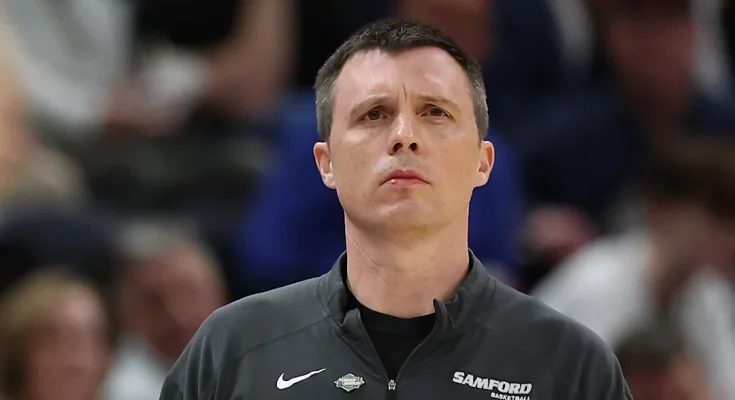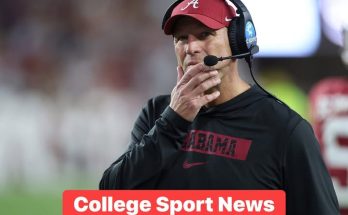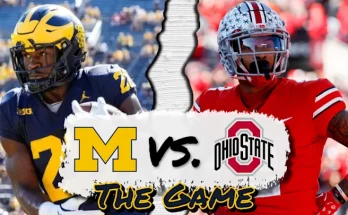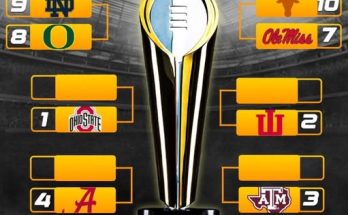In a legal victory that could have had wide-reaching implications for college sports, the NCAA and Ohio State University successfully defended themselves against a class-action lawsuit that sought to compensate former student-athletes for their participation in college athletics. The lawsuit, part of a growing movement challenging the traditional model of amateurism in collegiate sports, was dismissed in a ruling that reaffirmed long-standing interpretations of the NCAA’s authority over compensation rules for athletes. While the landscape of name, image, and likeness (NIL) rights has shifted dramatically in recent years, this case represents a reaffirmation of the idea that not all retroactive compensation claims will be entertained by the courts.
The lawsuit was brought forth by a group of former athletes who alleged that both the NCAA and specific member institutions, such as Ohio State, unfairly profited from their labor while denying them a fair share of the revenue they helped generate. These athletes argued that under federal antitrust law, the NCAA’s rules against direct pay for participation in college sports constituted a restriction on fair market competition. They contended that if college athletes were treated like employees under traditional labor standards, then schools and the NCAA could be liable for back pay, damages, and interest spanning years of their playing careers.
The plaintiffs in this particular suit attempted to establish a class of former athletes who had competed in Division I sports and were allegedly denied proper compensation for their services. They claimed that the NCAA’s prior enforcement of amateurism rules — which prohibited schools from paying athletes — constituted an unlawful restraint of trade. The legal strategy mirrored past challenges to the NCAA’s policies, such as the landmark O’Bannon v. NCAA case and the more recent Alston v. NCAA decision in the U.S. Supreme Court. However, while those earlier decisions found that some of the NCAA’s educational benefits restrictions were anticompetitive, this case sought broader relief by asserting athletes were due full back pay — a much riskier and sweeping legal argument.
Ultimately, the court declined to certify the class, a key procedural step necessary for the plaintiffs to proceed with a class-action lawsuit. Without certification, the case cannot move forward as a representative suit involving thousands of former athletes. In the ruling, the judge determined that the plaintiffs failed to meet the necessary legal threshold to demonstrate commonality and predominance — two essential criteria in class-action litigation. Specifically, the court concluded that the individualized circumstances of each athlete’s experience, scholarship status, and sport made it impractical to adjudicate the claims as a single class.
Ohio State, one of the named institutional defendants, was also cleared of wrongdoing in the judge’s decision. The university had argued that its conduct was consistent with NCAA rules in place at the time, and that it had no independent authority to unilaterally pay athletes without violating NCAA bylaws. The court accepted this rationale, further finding that there was insufficient evidence to suggest that Ohio State, in particular, had acted in a way that distinguished it from any other member institution subject to the same national rules.
The NCAA, for its part, celebrated the outcome as a vindication of its position that amateurism rules — even those now largely replaced by the current NIL system — were lawful and enforceable when in effect. A spokesperson for the NCAA said the organization would continue to defend itself against legal efforts that seek retroactive financial compensation and disrupt the balance of collegiate sports.
However, this decision does not signal an end to legal scrutiny of the NCAA’s model. Rather, it underscores the fine line courts are navigating between deference to the organization’s traditional rules and acknowledgment of the evolving economic realities of college sports. The legal tide in recent years has clearly shifted toward recognizing athletes’ rights, particularly after the 2021 Alston decision, which opened the door for schools to provide education-related benefits beyond what the NCAA previously allowed. That decision, written by Justice Neil Gorsuch and supported in a concurring opinion by Justice Brett Kavanaugh, suggested that further legal challenges to the NCAA’s compensation structure might find success — especially if framed in more narrowly tailored ways.
In the wake of that ruling, states began passing legislation — or issuing executive orders — that allowed student-athletes to profit from their name, image, and likeness. The NCAA, caught in a precarious position between state law and its own regulations, responded by suspending enforcement of NIL-related restrictions. As a result, college athletes are now signing sponsorship deals, profiting from social media endorsements, and working with marketing agents in ways that were previously prohibited.
Still, these developments primarily apply to forward-looking compensation — i.e., athletes getting paid from the time the rules changed onward. What the plaintiffs in the dismissed case hoped to achieve was much more complex: retroactive pay for years when NIL rights and direct compensation were barred. That legal argument faces steep odds, even in an era of expanding athlete rights, because it asks courts to undo years of settled expectations, financial arrangements, and compliance policies.
Legal scholars observing the case noted that the dismissal was not particularly surprising, given the sweeping nature of the class definition and the difficulty of retroactively applying new economic frameworks to old regimes. However, they also cautioned that the ruling is unlikely to be the final word on athlete compensation. New lawsuits continue to be filed across the country challenging everything from transfer rules to collective bargaining rights. In fact, several cases currently working their way through the courts are attempting to define student-athletes as employees under federal labor law — a potentially seismic shift if upheld by higher courts.
Meanwhile, federal lawmakers have introduced multiple pieces of legislation aimed at establishing national standards for NIL rights, revenue sharing, and labor protections for student-athletes. While none have yet passed both chambers of Congress, the pressure is mounting for a legislative solution that provides consistency across state lines and institutional boundaries. The NCAA, for its part, has publicly supported federal intervention — though it hopes such legislation will preserve the ability to regulate amateur sports and limit financial obligations to athletes.
Ohio State, a powerhouse in both football and basketball, has not been immune from the wider debate over athlete compensation. Its programs generate tens of millions of dollars annually, and many critics argue that athletes in such programs are de facto employees, risking injury and dedicating massive amounts of time in exchange for scholarships that don’t reflect their true market value. But Ohio State and similar universities maintain that the value of a college education, combined with the new NIL rights and support systems in place, provide sufficient benefits to athletes without the need to formalize employment relationships.
In the dismissed case, the court seemed to side with this viewpoint — or at least, it determined that the plaintiffs had not demonstrated a viable legal framework for mass retroactive compensation. While some observers expressed disappointment in the ruling, others saw it as a necessary boundary to protect the stability of the collegiate sports model. Still, the broader conversation around athlete compensation is far from settled, and more litigation is almost certain.
What this case most clearly illustrates is the difficulty of applying a one-size-fits-all legal solution to a landscape as complex and varied as college athletics. Different sports generate vastly different revenues; athletes have varying degrees of visibility, bargaining power, and professional prospects. While football and basketball stars at major schools might have credible claims to high compensation, swimmers or cross-country runners may not. Crafting a legal theory that encompasses all those differences in a single class-action suit is an uphill battle — one that failed here, but may not always fail in the future.
In the meantime, schools like Ohio State will continue to operate in a new NIL era while defending their past practices against legal challenges. The NCAA will face ongoing calls to adapt, to democratize decision-making, and to reconcile the growing view that amateurism no longer fits with the billion-dollar industry college sports has become. And athletes, emboldened by legal wins and cultural shifts, are likely to keep pushing the boundaries — whether through courts, collective action, or policy advocacy.
For now, the NCAA and Ohio State can count this legal outcome as a win. But in the long game of college sports reform, it is only one chapter in a much larger and unfolding story.



